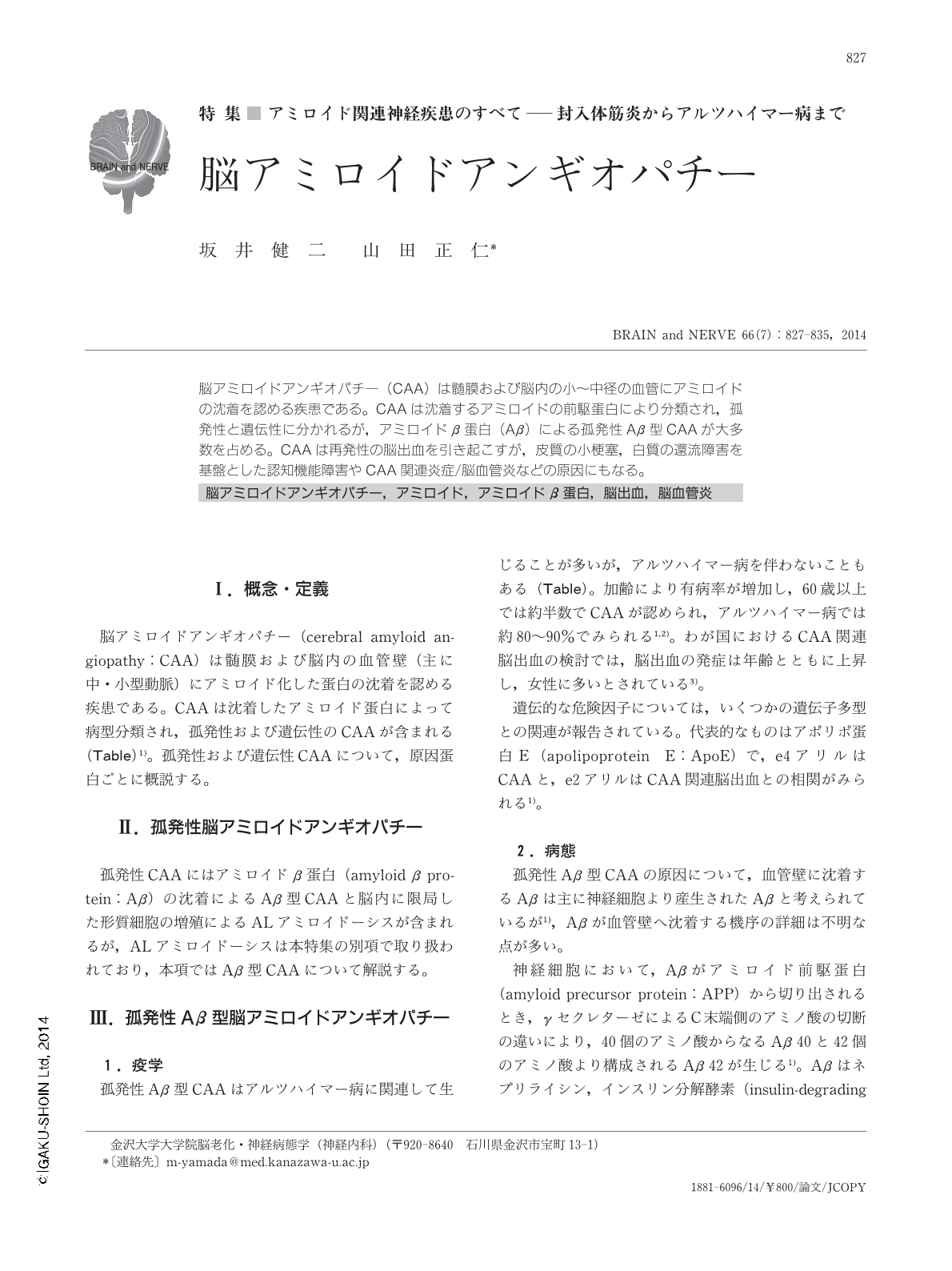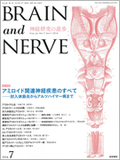Japanese
English
- 有料閲覧
- Abstract 文献概要
- 1ページ目 Look Inside
- 参考文献 Reference
脳アミロイドアンギオパチー(CAA)は髄膜および脳内の小~中径の血管にアミロイドの沈着を認める疾患である。CAAは沈着するアミロイドの前駆蛋白により分類され,孤発性と遺伝性に分かれるが,アミロイドβ蛋白(Aβ)による孤発性Aβ型CAAが大多数を占める。CAAは再発性の脳出血を引き起こすが,皮質の小梗塞,白質の還流障害を基盤とした認知機能障害やCAA関連炎症/脳血管炎などの原因にもなる。
Abstract
Cerebral amyloid angiopathy (CAA) is a disorder characterized by the accumulation of amyloid proteins in the small and medium-sized blood vessels of the leptomeninges and central nervous system. Amyloid β protein (Aβ), immunoglobulin light chains, cystatin C, prion protein (PrP), ABri/ADan, transthyretin, and gelsoline, are all associated with CAA. While most CAA patients demonstrated sporadic Aβ-type amyloid deposition, a small number of patients present with familial forms, e.g. Dutch-type hereditary cerebral hemorrhage with amyloidosis (HCHWA-D), Icelandic-type HCHWA (HCHWA-I), familial British dementia (FBD), familial Danish dementia (FDD), and PrP-CAA. Deposited amyloid proteins damage smooth muscle cells in blood vessel walls leading to pathological appearances calling 'double-barreled' changes, fibrinoid necrosis, and microaneurysms. These structural abnormalities result in microinfarcts and hemorrhages in the central nervous system. Recurrent hemorrhage is a common clinical manifestation in patients with CAA; however, small multiple infarctions, progressive dementia, transient neurological symptoms, and CAA-related inflammation can also occur. The pathomechanisms of CAA remain unknown. Although improvements in imaging techniques have allowed us to identify patients with CAA more readily, pathological examination is still essential for a definite diagnosis. There have been no curative treatments for CAA so far.

Copyright © 2014, Igaku-Shoin Ltd. All rights reserved.


